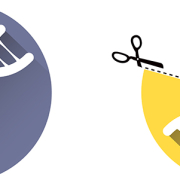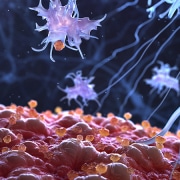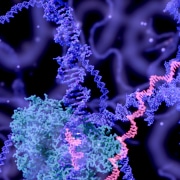Genomics and HIV: can we be cured?
New genomic discoveries provide hope that lifelong antiretroviral therapy may one day be a thing of the past
When a person is first infected with HIV, the virus copies its genetic information into the genome of the host’s immune cells. Current medications are extremely effective at suppressing viral replication and halting disease progression; but if medication is stopped, the stored DNA acts as a reservoir from which the virus can quickly begin to replicate again. Patients must therefore take antiretroviral therapy for the rest of their lives to prevent the development of AIDS, and thus the virus is currently considered incurable.
Explorations in stem cell treatment
Two HIV patients were recently reported to have undetectable levels of the virus following bone marrow stem cell transplants for the treatment of cancer.
The first case of this kind was reported in Germany 10 years ago, when an HIV-positive patient with acute myeloid leukaemia (AML) was given a stem cell transplant from a donor homozygous for the CCR5Δ32 gene variant, which is associated with resistance to HIV. After the transplant, the patient did not require medication for HIV. The medical team was doubtful that this outcome could be replicated in others, however, due to the aggressive nature of the patient’s treatment: two rounds of total-body irradiation prior to transplant. He also suffered severe graft-versus-host disease post transplant.
But earlier this year two similar cases were reported: the first in Nature, and the second at the 2019 Conference on Retroviruses and Opportunistic Infections – by Dr Björn-Erik Jensen, from Heinrich Heine University Hospital in Düsseldorf, Germany. In the first case, the HIV-positive ‘London patient’ was given a stem cell transplant from a CCR5Δ32/Δ32 donor, without prior irradiation, for the treatment of Hodgkin lymphoma. He experienced only mild graft-versus-host disease, and when antiretroviral therapy was stopped 16 months later his viral load remained undetectable. At around the same time, the ‘Düsseldorf patient’, an HIV-positive man with AML, received a stem cell transplant from a homozygous CCR5Δd32 donor. Antiretroviral therapy was discontinued in November 2018 and virus levels have remained undetectable since that time.
These latest reports demonstrate that this approach to treatment not only works but can work without aggressive conditioning, and in the absence of severe graft-versus-host disease. This genotype of CCR5 should therefore be considered when selecting stem-cell donors for HIV-positive blood cancer patients. Importantly, however, this form of treatment is not suitable for the vast majority of HIV patients who do not have these forms of cancer, as stem cell transplants pose serious risks.
Genome editing and antiretrovirals – the killer combination?
There is hope that genome editing could one day offer a safe method for eliminating HIV from the bodies of infected people.
Experiments in human HIV-infected immune cells, engrafted in humanised mice, have shown that CRISPR/Cas9 successfully disrupts crucial genes for virus replication within the host white blood cells. But while viral replication is significantly reduced, the mice are not cured.
New research has now combined this approach with antiretroviral drug therapy, leaving one third of subjects virus free. CRISPR/Cas9 was used to inactivate viral DNA inside cells, while a long-acting slow-effective release antiretroviral therapy medication was used to block viral replication.
The scientists are now evaluating the safety of the method for human use, with the hope of freeing patients from lifelong dependence on medication.
Though the applicability of this treatment in humans is yet to be seen, what’s certain is that genomics is proving to be a valuable tool in the search for new approaches to a serious health problem that currently affects around 38 million people worldwide.
–









